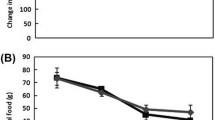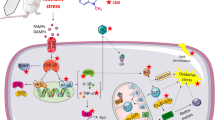Abstract
Taking into account the promising pharmacological actions of (Z)-2,3-bis(4-chlorophenylselanyl) prop-2-en-1-ol) (bis selenide), an organic compound containing the trace element selenium, and the constant search for drugs that improve the cognitive performance, the objective of the present study was to investigate whether bis selenide treatment ameliorates memory deficits induced by reserpine in rats. For this aim, male adult rats received a single subcutaneous injection of reserpine (1 mg/kg), a biogenic amine-depleting agent used to induce memory deficit. After 24 h, bis selenide at doses of 25 and 50 mg/kg was administered to rats by intragastric route, and 1 h later, the animals were submitted to behavior tasks. The effects of acute administration of bis selenide on memory were evaluated by social recognition, step-down passive avoidance, and object recognition paradigms. Exploratory and locomotor activities of rats were determined using the open-field test. Analysis of data revealed that the social memory disruption caused by reserpine was reversed by bis selenide at both doses. In addition, bis selenide, at the highest dose, prevented the memory deficit resulting from reserpine administration to rats in step-down passive avoidance and object recognition tasks. No significant alterations in locomotor and exploratory behaviors were found in animals treated with reserpine and/or bis selenide. Results obtained from distinct memory behavioral paradigms revealed that an acute treatment with bis selenide attenuated memory deficits induced by reserpine in rats.







Similar content being viewed by others
References
Stazi AV, Trinti B (2008) Selenium deficiency in celiac disease: risk of autoimmune thyroid diseases. Minerva Med 99:643–653
Papp LV, Lu J, Holmgren A, Khanna KK (2007) From selenium to selenoproteins: synthesis, identity, and their role in human health. Antioxid Redox Signal 9:775–806. doi:10.1089/ars.2007.1528
Narajji C, Karvekar MD, Das AK (2007) Biological importance of organoselenium compounds. Indian J Pharm Sci 69:344–351. doi:10.4103/0250-474X.34541
Schweizer U, Bräuer AU, Köhrle J, Nitsch R, Savaskan NE (2004) Selenium and brain function: a poorly recognized liaison. Brain Res Brain Res Rev 45:164–178. doi:10.1016/j.brainresrev.2004.03.004
Ozdemir E (2011) Physiological role of selenium and selenoprotein in neuropsychiatric disease. J Med Sci 11:11–18. doi:10.3923/jms.2011.11.18
Nogueira CW, Rocha JBT (2010) Diphenyl diselenide a janus-faced molecule. J Braz Chem Soc 21:2055–2071. doi:10.1590/S0103-50532010001100006
Posser T, Franco JL, dos Santos DA, Rigon AP, Farina M, Dafré AL, Teixeira Rocha JB, Leal RB (2008) Diphenyl diselenide confers neuroprotection against hydrogen peroxide toxicity in hippocampal slices. Brain Res 1199:138–147. doi:10.1016/j.brainres.2008.01.004
Gul S, Bahadir B, Hanci V, Acikgoz S, Bektas S, Ugurbas E, Ankarali H, Kalayci M, Acikgoz B (2010) Effects of ebselen versus nimodipine on cerebral vasospasm subsequent to experimental subarachnoid hemorrhage in rats. J Clin Neurosci 17:608–611. doi:10.1016/j.jocn.2009.07.115
Brüning CA, Prigol M, Luchese C, Pinton S, Nogueira CW (2012) Diphenyl diselenide ameliorates behavioral and oxidative parameters in an animal model of mania induced by ouabain. Prog Neuropsychopharmacol Biol Psychiatry 38:168–174. doi:10.1016/j.pnpbp.2012.03.005
Souza AC, Brüning CA, Leite MR, Zeni G, Nogueira CW (2010) Diphenyl diselenide improves scopolamine-induced memory impairment in mice. Behav Pharmacol 21:556–562. doi:10.1097/FBP.0b013e32833befcf
Pinton S, da Rocha JT, Gai BM, Prigol M, da Rosa LV, Nogueira CW (2011) Neuroprotector effect of p, p′-methoxyl-diphenyl diselenide in a model of sporadic dementia of Alzheimer’s type in mice: contribution of antioxidant mechanism. Cell Biochem Funct 29:235–243. doi:10.1002/cbf.1741
Dias GR, Vieira FA, Dobrachinski F, Bridi JC, Balk Rde S, Soares FA, Nogueira CW, Barbosa NB (2012) Diphenyl diselenide diet intake improves spatial learning and memory deficits in hypothyroid female rats. Int J Dev Neurosci 30:83–89. doi:10.1016/j.ijdevneu.2011.12.011
Savegnago L, Jesse CR, Moro AV, Borges VC, Santos FW, Rocha JB, Nogueira CW (2006) Bis selenide alkene derivatives: a class of potential antioxidant and antinociceptive agents. Pharmacol Biochem Behav 83:221–229. doi:10.1016/j.pbb.2006.02.002
Jesse CR, Savegnago L, Nogueira CW (2009) Mechanisms involved in the antinociceptive and anti-inflammatory effects of bis selenide in mice. J Pharm Pharmacol 61:623–630. doi:10.1211/jpp.61.05.0011
Jesse CR, Wilhelm EA, Bortolatto CF, Nogueira CW (2010) Evidence for the involvement of the serotonergic 5-HT2A/C and 5-HT3 receptors in the antidepressant-like effect caused by oral administration of bis selenide in mice. Prog Neuropsychopharmacol Biol Psychiatry 34:294–302. doi:10.1016/j.pnpbp.2009.11.023
Bortolatto CF, Jesse CR, Wilhelm EA, Chagas PM, Nogueira CW (2012) Organoselenium bis selenide attenuates 3-nitropropionic acid-induced neurotoxicity in rats. Neurotox Res. doi:10.1007/s12640-012-9336-5
Kensinger EA, Shearer DK, Locascio JJ, Growdon JH, Corkin S (2003) Working memory in mild Alzheimer’s disease and early Parkinson’s disease. Neuropsychology 17:230–239. doi:10.1037/0894-4105.17.2.230
Reiner A, Dragatsis I, Dietrich P (2011) Genetics and neuropathology of Huntington’s disease. Int Rev Neurobiol 98:325–372
Colpaert FC (1987) Pharmacological characteristics of tremor, rigidity and hypokinesia induced by reserpine in rat. Neuropharmacology 26:1431–1440
Gerlach M, Riederer P (1996) Animal models of Parkinson’s disease: an empirical comparison with the phenomenology of the disease in man. J Neural Transm 103:987–1041. doi:10.1007/BF01291788
Carvalho RC, Patti CC, Takatsu-Coleman AL, Kameda SR, Souza CF, Garcez-do-Carmo L et al (2006) Effects of reserpine on the pluz-maze discriminative avoidance task: dissociation between memory and motor impairments. Brain Res 1122:176–183. doi:10.1016/j.brainres.2006.09.008
Aguiar AS Jr, Araújo AL, da-Cunha TR, Speck AE, Ignácio ZM, De-Mello N, Prediger RD (2009) Physical exercise improves motor and short-term social memory deficits in reserpinized rats. Brain Res Bull 79:452–457. doi:10.1016/j.brainresbull.2009.05.005
Moro AV, Nogueira CW, Barbosa NBV, Menezes PH, Rocha JBT, Zeni G (2005) Highly stereoselective one-pot producers to prepare bis- and tris-chalcogenide alkenes via addition of disulfides and diselenides to terminal alkynes. J Org Chem 70:5257–5268. doi:10.1021/jo050448o
Dantzer R, Bluthe RM, Koob GF, Le Moal M (1987) Modulation of social memory in male rats by neurohypophyseal peptides. Psychopharmacology (Berl) 91:363–368
Prediger RD, Da Cunha C, Takahashi RN (2005) Antagonistic interaction between adenosine A2A and dopamine D2 receptors modulates the social recognition memory in reserpine-treated rats. Behav Pharmacol 16:209–218
Sakaguchi M, Koseki M, Wakamatsu M, Matsumura E (2006) Effects of systemic administration of beta-casomorphin-5 on learning and memory in mice. Eur J Pharmacol 530:81–87. doi:10.1016/j.ejphar.2005.11.014
Rosa RM, Flores DG, Appelt HR, Braga AL, Henriques JAP, Roesler R (2003) Facilitation of long-term object recognition memory by pretraining administration of diphenyl diselenide in mice. Neurosci Lett 341:217–220. doi:10.1016/S0304-3940(03)00187-3
Walsh RN, Cummins RA (1976) The open-field test: a critical review. Psychol Bull 83:482–504
Fernandes VS, Santos JR, Leão AH, Medeiros AM, Melo TG, Izídio GS, Cabral A, Ribeiro RA, Abílio VC, Ribeiro AM, Silva RH (2012) Repeated treatment with a low dose of reserpine as a progressive model of Parkinson’s disease. Behav Brain Res 231:154–163. doi:10.1016/j.bbr.2012.03.008
Bugalho P, Vale J (2011) Brief cognitive assessment in the early stages of Parkinson disease. Cogn Behav Neurol 24:169–173. doi:10.1097/WNN.0b013e3182350a1f
Alves CS, Andreatini R, da Cunha C, Tufik S, Vital MA (2000) Phosphatidylserine reverses reserpine-induced amnesia. Eur J Pharmacol 404:161–167. doi:10.1016/S0014-2999(00)00607-5
Starkstein SE (2012) Apathy in Parkinson’s disease: diagnostic and etiological dilemmas. Mov Disord 27:174–178. doi:10.1002/mds.24061
Pluck GC, Brown RG (2002) Apathy in Parkinson’s disease. J Neurol Neurosurg Psychiatr 73:636–642. doi:10.1136/jnnp.73.6.636
Starkstein SE, Petracca G, Chemerinski E, Kremer J (2001) Syndromic validity of apathy in Alzheimer’s disease. Am J Psychiatr 158:872–877. doi:10.1176/appi.ajp.158.6.872
Stacy M (2011) Nonmotor symptoms in Parkinson’s disease. Int J Neurosci 121:9–17. doi:10.3109/00207454.2011.620196
Lemaire M (2003) Social recognition task in the rat. Curr Protoc Pharmacol 5(5):30
Varanese S, Perfetti B, Ghilardi MF, Di Rocco A (2011) Apathy, but not depression, reflects inefficient cognitive strategies in Parkinson’s disease. PLoS One 6:e17846. doi:10.1371/journal.pone.0017846
Kameyama T, Nabeshima T, Kozawa T (1986) Step-down-type passive avoidance- and escape-learning method. Suitability for experimental amnesia models. Pharmacol Methods 16:39–52
Rodriquiz RM, Wetsel WC (2006) Assessments of cognitive deficits in mutant mice. In: Levin ED, Buccafusco JJ (eds) Animal models of cognitive impairment. Taylor and Francis Group, Boca Raton, pp 223–269
Bilska A, Dubiel M, Sokołowska-Jezewicz M, Lorenc-Koci E, Włodek L (2007) Alpha-lipoic acid differently affects the reserpine-induced oxidative stress in the striatum and prefrontal cortex of rat brain. Neuroscience 146:1758–1771. doi:10.1016/j.neuroscience.2007.04.002
Nade VS, Dwivedi S, Kawale LA, Upasani CD, Yadav AV (2009) Effect of Hibiscus rosa sinensis on reserpine-induced neurobehavioral and biochemical alterations in rats. Indian J Exp Biol 47:559–563
Pashkow FJ (2011) Oxidative stress and inflammation in heart disease: do antioxidants have a role in treatment and/or prevention? Int J Inflam 2011:514623. doi:10.4061/2011/514623
Rodríguez JJ, Noristani HN, Verkhratsky A (2012) The serotonergic system in ageing and Alzheimer’s disease. Prog Neurobiol. doi:10.1016/j.pneurobio.2012.06.010
Quartermain D, Judge ME (1983) Recovery of memory following forgetting induced by depletion of biogenic amines. Pharmacol Biochem Behav 18:179–184. doi:10.1016/0091-3057(83)90360-X
van der Staay FJ, Rutten K, Erb C, Blokland A (2011) Effects of the cognition impairer MK-801 on learning and memory in mice and rats. Behav Brain Res 220:215–229. doi:10.1016/j.bbr.2011.01.052
Prigol M, Brüning CA, Martini F, Nogueira CW (2012) Comparative excretion and tissue distribution of selenium in mice and rats following treatment with diphenyl diselenide. Biol Trace Elem Res. doi:10.1007/s12011-012-9464-z
Nogueira CW, Zeni G, Rocha JB (2004) Organoselenium and organotellurium compounds: toxicology and pharmacology. Chem Rev 104:6255–6285. doi:10.1021/cr0406559
Acknowledgments
The financial support by the Universidade Federal de Santa Maria (UFSM), Coordenação de Aperfeiçoamento de Pessoal de Nível Superior (CAPES), Conselho Nacional de Desenvolvimento Científico e Tecnológico (CNPq), and Fundação de Amparo à Pesquisa do Estado do Rio Grande do Sul (FAPERGS-CNPq/PRONEX) research grant # 10/0005-1 and FAPERGS research grant # 10/0711-6 is gratefully acknowledged.
Conflict of Interest
The authors declare that they have no conflict of interest.
Author information
Authors and Affiliations
Corresponding author
Rights and permissions
About this article
Cite this article
Bortolatto, C.F., Guerra Souza, A.C., Wilhelm, E.A. et al. Acute Treatment with Bis Selenide, an Organic Compound Containing the Trace Element Selenium, Prevents Memory Deficits Induced by Reserpine in Rats. Biol Trace Elem Res 151, 92–99 (2013). https://doi.org/10.1007/s12011-012-9540-4
Received:
Accepted:
Published:
Issue Date:
DOI: https://doi.org/10.1007/s12011-012-9540-4




